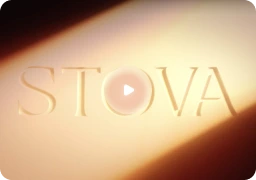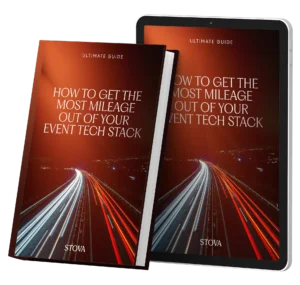Mastering the Art of Brand Storytelling at Events
April 1, 2022
Event planning is no longer only about logistics. There’s a true art to designing masterful events that engage, serve, and even fundamentally change your audience members, for the better. One way to make a powerful impact with your events is through weaving in brand storytelling. Read on to discover what brand storytelling is, why you should use it, and how to begin implementing it into your event strategy. Then, discover the important elements of brand storytelling and what to keep in mind as you’re planning, keeping authenticity and universal human truths top of mind.
What Is Brand Storytelling?
In a world filled with noise, how does a brand stand out? By connecting with those who share your values. More than two-thirds of consumers around the world prefer to buy goods and services from brands that stand for a purpose that reflects their personal values and beliefs, according to research from global consulting firm Accenture. It comes down to communicating those values effectively, and in an authentic way, through brand storytelling.
Think about storytelling as a narrative, a word that means “a way of presenting or understanding a situation or series of events that reflects and promotes a particular point of view or set of values,” according to Merriam-Webster. Engaging in brand storytelling means you’re creating a narrative that has storytelling elements to emotionally connect your audience to your brand – or, in this case, your event. Much like a good book, an engaging podcast episode or your favorite Netflix series, a strong story includes a setting, characters, conflict, a climax, and an outcome. Four of these five parts are easy enough, but what many brands get wrong is the second one: What many brand storytellers get wrong, however, is that the main character in your brand story is not your brand or your event – it’s your customer.
Why Should You Use Brand Storytelling?
Today’s marketplace is as crowded as it’s ever been. Consumers have more options than ever before in nearly every category out there, and they often need and want help determining what is the best fit for them. Brand storytelling is a tool you can use to sum up what you stand for, what differentiates you from anyone else and, ultimately, why you exist. Storytelling enables you to stop pushing your events and instead, communicate your values and engage with the people who share them. When you find those people, connecting over shared values – over a solution to a problem – will increase their chances of staying loyal to your brand after that problem passes, too. At that point, sharing who you are and why you exist through storytelling becomes greater than a narrative, evolving into part of your company strategy to move your brand forward.
Event organizers can leverage brand storytelling to create higher engagement and cultivate ongoing relationships with their audience. This goes beyond creating an “About Us” page on your event website, however. That’s where developing your brand’s own distinctive persona – a supporting character in your brand story – comes in as a critical part of your event planning strategy.
How to Use Brand Storytelling for Events
Here’s how to begin crafting your story.
1. Consider Your Audience
The starting point for brand storytellers is to think about who your event audience is so you can design a story that appeals to them. This must be the foundation of your storytelling, just as it is for writers (consider the differences in writing to a group of history buffs, for instance, versus romance novel fans). Identifying their demographics is a good way to begin, but to really understand what stories will interest and motivate them, you’ll need to get to know them on a deeper level. Event organizers can do this by building out personas. These will help define your audience types based on the needs they have, what draws them to your event, what challenges they’re facing and what your brand can help fulfill for them that they’re currently missing. From there, begin crafting different brand stories for each persona.
2. Create an Event Persona
You already know that your audience (each of those personas) are the main characters in your storytelling, but your brand has a persona, too. Consider your event a “supporting actor” role in your brand story. It may sound strange, but try to picture your event as person – you can even give it a name, if you want – to help build out its characteristics. For instance, what’s their style like? What do they like to do on the weekends? What’s a hobby they’re interested in? What’s a typical workday like for them? Sure, it’s odd to personify an event, but this approach can help you build out a real personality for your event brand, making it that much easier to determine how your event’s brand will be able to speak out and interact with your audience.
3. Keep Things Consistent
Each new chapter of your brand storytelling should build upon previous chapters. Just as you wouldn’t be able to understand a book by starting to read on page 100, you must meet your audience where they are, and help them learn how to interact with your event brand through every step along the way. This means it’s critical to align your brand storytelling across your website, social channels, sponsorships, newsletters and other forms of communication, both pre-, during and post-event. Yes, keeping a consistent brand tone (i.e., staying in the voice of your event personality you created) is important, but it goes beyond that. Cohesive brand storytelling involves continuously communicating your values through a variety of narratives, formats and stories that enable you to connect with your audience and provoke an emotional response – and therefore forge a deeper connection between them and your brand.
Important Elements of Brand Storytelling
Whether you’re new to brand stories for your event or tweaking your current strategy, here’s what to keep in mind when utilizing this strategy:
- Identify pain points. When building out audience personas, think about their individual concerns and challenges. Incorporating these specific examples into your storytelling helps elicit an emotional response, a key component of true connection.
- Determine CTAs. Once someone has received your messaging, what action do you want them to take? Don’t forget to clearly communicate next steps (whether that’s signing up for your event, joining a pre-conference session, scheduling a meeting with a sponsor, etc.) to prompt your desired outcome.
- Be authentic. As much as brand storytelling plays into event strategy, it shouldn’t be used as a tactic. Take utmost care to be authentic in both the telling and delivery of your brand story, keeping the focus on your audience and their needs.
- Include universal truths. At the heart of your storytelling, look beyond your own event or brand to share the true soul of your story that’s relevant and relatable on a human level.
Tell Your Story with Stova
Creating a cohesive brand story for your event doesn’t have to be difficult, but if you feel like there’s not enough hours in the day, we can help. Contact Stova today to schedule a demo and learn how we can help you design brilliant, cohesive brand storytelling for your events programs.
Whether your event is virtual, hybrid, or in-person, enhance your attendee’s journey with an event ecosystem built for your audience. Ready to walk through Stova's event technology solutions? Schedule some time with us today.


